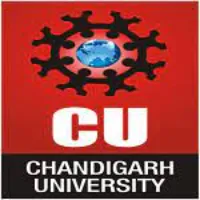Latest Applications Open 2024:
The entire world is running out of fuel day by day. Enormous efforts have been made by renowned scientists in search of an alternative source other than fossil fuels to feed the locomotives.
But none of those ideas has favored humankind in full measure. Still, nothing can compensate for the depletion of fossil fuels. Like all other natural resources, nuclear energy is an invaluable gift of God. The credit for the blending of nuclear resources to the livelihood of a common man is bagged up by the chauvinist-cum-curious attitude of belligerent folks.
On analyzing the chronology of nuclear energy, we find that several human brains were meticulously involved in changing this moonshine energy, as described by Ernest Rutherford, who was better known as the father of nuclear physics, to reality.
Whenever the evolution of mankind is questioned or investigated, the world uses to quote such transformation with this ideology7 “Necessity is the mother of invention”. Things and stuff that are so mandatory, come under the category of needs. But in the case of nuclear energy, this ideology fails. Almost at the cusp of World War II, several governments, i.e. precisely the United States, the United Kingdom, France, Germany, and the Soviet Union were ready to extend warm hands and hearts to develop nuclear energy just to amass wealth and to generate woe among foes without envisaging that this kind of attitude will ruin their wisdom.
Attitude to dominate others introduced the evil face of nuclear energy to the world. Hiroshima and Nagasaki were the very first victims of nuclear energy. Recently, Iran was targeted by the USA just because of nuclear energy. Nuclear energy has been turned into a sign of prestige and superiority. It even decides the status of a country among world nations. The term nuclear energy became familiar in the streets of India only after 1956.
Latest Applications For Various UG & PG Courses Open 2024
-
- Parul University | Admissions Open for All Courses 2024. Apply Now
- UPES Dehradun | Admissions Open for All Courses 2024. Apply Now
- Chandigarh University | Admissions Open for All Courses 2024. Apply Now
- LPU 2024 | Admissions Open for All Courses 2024. Apply Now
- IIAD, Delhi | Admissions Open for All Courses 2024. Apply Now
- GIBS, Bangalore | PGDM Applications Open. Package upto 15.5 LPA. Apply Now
- GNIOT, Greater Noida | Admissions Open for All Courses 2023. Apply Now
- The Design Village | Admissions Open for All Courses 2024. Apply Now
- IMS Ghaziabad UC Campus | Admissions Open for All Courses 2024. Apply Now
- KIIT School of Management | Admissions Open for All Courses 2024. Apply Now
- KSRM | Admissions Open for All Courses 2024. Apply Now
- Jaipuria Institute of Management | Admissions Open for All Courses 2024. Apply Now
- NIIT | Admissions Open for All Courses 2024. Apply Now
- MITWPU | Admissions Open for All Courses 2024. Apply Now
- Amrita B.Tech | Admissions Open for All Courses 2024. Apply Now
- KL University | Admissions Open for All Courses 2024. Apply Now
- Alliance MBA | Admissions Open for All Courses 2024. Apply Now
- Alliance UG | Admissions Open for All Courses 2024. Apply Now
India’s first Nuclear Reactor was Apsara. It was also the first nuclear reactor in Asia. Apsara went critical at Bhabha Atomic Research Centre (BARC), Trombay on August 4, 1956. It heralded the arrival of India’s nuclear energy program. Dr. Homi Bhabha, who was better known as the father of the Indian nuclear program, conceptualized the design of the reactor. It was an indigenous project being
built by the passion, sweat, and dedicated work of the Indian scientist in a record time of 15 months. Our former prime minister, Pandit Jawaharlal Nehru named the reactor Apsara which refers to divine and celestial beauty.
Later on, India experienced benefits from various nuclear reactors assisted by world nations, especially Canada, the USA, and Russia. Besides assistance, agreements that would ensure the use of nuclear energy for comforting mankind and not to build coffins were monitored with utmost care. Such agreements are RAPP-1, signed in 1963, and followed by RAPP-2 in 1966. These reactors contained rigid safeguards to ensure that they would not be used for a military program. ‘The United States and Canada terminated their assistance after the detonation of India’s first nuclear explosion in 1974.
1974 marked a watershed in India’s scientific heights. It is very apt to say that developments and dangers are twins. India is not an exceptional example in this case. Pokhran I coded as “the smiling Buddha”, scripted our nation’s name in the list of nuclear weapon-possessing countries. This was also the first confirmed nuclear test by a nation outside the five permanent members of the United Nations Security Council. A knife can be used to cut vegetables and may serve as a kitchen utensil but it may be used to kill fellow folks. Nuclear energy’ satisfies the above-mentioned purpose. Officially, the Indian Ministry of External Affairs (MoMA) claims this test was a peaceful nuclear explosion, but it was also a part of an accelerated nuclear program. The weapon yield remains uncertain, with estimates of up to eight kilo tonnes. The Federation of American Scientists (FAS) on its website claimed that the smiling Buddha nuclear test may have only been partially successful. These conclusions have no evidence but express only envy.
The soils and sacredness of Rajasthan once again experienced a nuclear test in 1998. It was Pokhran II that earned pride and fear from world nations. It consisted of five detonations, of which the first was a fusion bomb and the remaining four were fission bombs. These nuclear tests resulted in a variety of sanctions against India by several major countries, including Japan and the United States.
India has even refused to go in accord with the Comprehensive Test Ban Treaty. This Treaty refers to a network costing one. billion dollars, which is more precisely in Indian value Rs. 6,000 crore to monitor the nuclear test all over the world.
Since 1945, about 2,000 nuclear bomb tests have been conducted by the global powers, with India having conducted two sets of nuclear explosions in 1974 and 1998. China has conducted 45 nuclear bomb tests, the USA more than a thousand. Comparing and analyzing all these strategies, India’s venture into the nuclear weapon test was not a big deal. India has even declared a unilateral moratorium regarding nuclear tests after 1998 Pokhran II.
Nehruji clearly explained India’s nuclear policy in these words: “We must develop this atomic energy quite apart from war—indeed I think, we must develop it to use it for peaceful purposes. …Of course, if we are compelled as a nation to use it for other purposes, possibly no pious sentiments of any of us will stop the nation from using it that way”. Border agitations and terrorist ventures strengthen the above-mentioned policy to a great extent.
Electricity has been an integral part of day-to-day life. The fourth-largest source of electricity in India is nuclear energy. As of 2012, India has 20 nuclear reactors in operation in six nuclear power plants generating 4,780 MW while seven other reactors are under construction and are expected to generate an additional 5,300 MW To a common man in the street, nuclear energy symbolizes revolts, disputes, people’s unrest, revolutions rather than developments in science.
Kudankulam is one the breaking news in the past 12 years. It has been a keyword for several vibrant social activists. The Fukushima disaster added fuel to the fire. It is not fair to deny the hazardous effects of the nuclear program. Several sources and even our former prime minister had blamed the American and Scandinavian NGOs for instilling the anti-nuclear strategy among the local inhabitants as the project is a Russian collaboration. Rs. 8,68,000 crore, precisely the sweat and hard work of Indians are invested in the Kudankulam project. Digging well is not a matter of task, but we should ensure whether it serves to pacify the people’s
thirst or it engulfs people and returns them as corpses.
Before the Fukushima disaster, 54 nuclear reactors provided 30 percent of Japan’s electricity. The Japanese government had planned on increasing that amount to 50 percent by 2030 with two new reactors that were under construction, 12 more planned reactors, and a used-fuel management strategy that included recycling used nuclear fuel, which was in the near-final stage of implementation. Today, only 11 reactors remain in operation, with work halted on other projects. Whereas in India, nuclear energy’s contribution to our electricity needs is just 10 percent. Effective and instantaneous rehabilitation measures and safety strategies should be provided to the local inhabitants. This aspect is quite a ridiculous attempt in India, where we can witness an ample number of scams and scandals. This at sixes and seven States can wipe out the entire population if we receive a bolt of lightning, which lacks perfect administration with instantaneous actions.
The future of the present government’s efforts toward the civilian nuclear agreements is yet another strategy’ which will design the destiny of our nation. As these are just in the planning phase, let time and actions decide fate.
The entire pool of scholars and scientists was puzzled about the disposal of nuclear waste harmlessly. Resources claim that India has about 80 to 100 nuclear weapons. A considerable number of nuclear weapons have been possessed by our neighboring countries too. But India sticks to the no-first-to-use policy which once again ensures the integrity and genuine attitude of our nation. The fate of the future generation is largely dependent on nuclear weapons and energy. Our country’s GDP has to be propelled by a reasonable amount of nuclear energy programs.
Latest Applications For Various UG & PG Courses Open 2024
-
- Parul University | Admissions Open for All Courses 2024. Apply Now
- UPES Dehradun | Admissions Open for All Courses 2024. Apply Now
- Chandigarh University | Admissions Open for All Courses 2024. Apply Now
- LPU 2024 | Admissions Open for All Courses 2024. Apply Now
- IIAD, Delhi | Admissions Open for All Courses 2024. Apply Now
- GIBS, Bangalore | PGDM Applications Open. Package upto 15.5 LPA. Apply Now
- GNIOT, Greater Noida | Admissions Open for All Courses 2023. Apply Now
- The Design Village | Admissions Open for All Courses 2024. Apply Now
- IMS Ghaziabad UC Campus | Admissions Open for All Courses 2024. Apply Now
- KIIT School of Management | Admissions Open for All Courses 2024. Apply Now
- KSRM | Admissions Open for All Courses 2024. Apply Now
- Jaipuria Institute of Management | Admissions Open for All Courses 2024. Apply Now
- NIIT | Admissions Open for All Courses 2024. Apply Now
- MITWPU | Admissions Open for All Courses 2024. Apply Now
- Amrita B.Tech | Admissions Open for All Courses 2024. Apply Now
- KL University | Admissions Open for All Courses 2024. Apply Now
- Alliance MBA | Admissions Open for All Courses 2024. Apply Now
- Alliance UG | Admissions Open for All Courses 2024. Apply Now
For a nation like India, being home to 125 crore people and being applauded as the world’s largest democratic nation, nuclear energy is a wise choice for power generation. Such a densely populated nation is too vulnerable. Our history and future do not want to encrypt another Chernobyl incident or Fukushima disaster. A perfect solution to all these conflicts is to seek a renewable energy source that is safe and secure also, i.e., wind energy, solar power, etc.
If you have any other questions related to India and Nuclear Energy, you may ask your Queries by commenting below.
Co-founder & Developer at IAS Paper
I am a 20-year-old guy from Mumbai (Maharashtra) currently doing Software Engineering.I love helping people and providing free education.
Official Website http://www.sharozdawa.com














